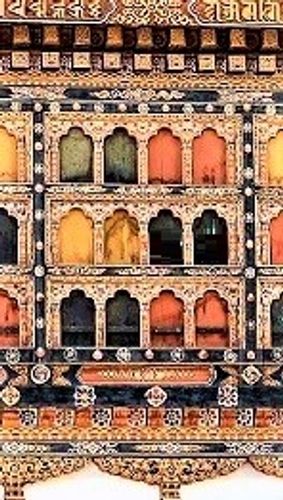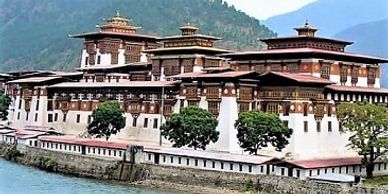If you are planning Bhutan tour there are three ways you can approach Bhutan.
The most convenient yet a costly option is to fly into the city of Paro which is the only airport in the Kingdom of Bhutan. There are direct flights from Indian cities of Delhi, Kolkata, Guwahati & Bagdogra Airport. These flights are operated by Drukair and Bhutan Airlines. From Paro you can commence your tour and end it and fly out to onward destination. This is the shortest way to avail a Bhutan Tour Package.
Alternatively you can fly in to Bagdogra Airport which is in West Bengal connected by all Indian Airlines operator from all major cities of India. This is much economic option but you need to enter Bhutan after travelling by road for 170 Kms. and enter through Phuentsholing. Phuentsholing can also be approached by train & road from Rail heads like New Jalpaiguri, Hasimara, New Alipurduar, etc.
Bhutan trips start from 4 Nights 5 days with 2 Nights stays at Thimpu and Paro each. If you are not in a hurry then you can add one more night stay at Punakha town. If you are approaching via Bagdogra and then by road then Phuentsholing is a good option for overnight stay and enjoy a break from long road journey and enjoy some great views of the gradually declining Dooars region. Phuentsholing is also the entry point where most Indian tourist enter the country hence you need wait for some time to process the permit formalities. Other than Punakha Haa Valley, Phobjikha Valley, Bumthang and Wangdue is also important places in a Bhutan tour package Itinerary. It is entirely upon the tourists interest and available time to plan a Bhutan Tour.
If you are more inclined towards adventure like trekking, camping, rafting, etc. then Bhutan tourism is one of the most safest destination even if you are a solo female traveler. People are most welcoming and tourist friendly. The most popular trek in Bhutan is the Tiger Nest Monastery one both for leisure tourist and pilgrimage. Then there is a 3 days Owl Trek to even 21 days Snowman Trek and many others in between of different duration. For Whitewater Rafting and Suspension Bridge head for Punakha, for Rock Climbing visit The Nose, Thimphu & for Kayaking – Wang Chhu, Puna Tsang Chhu.
Bhutan is a unique destination unlike any other in the world. Nature, Culture and tradition and spirituality is only on offer in this country where development is not measured in terms of Gross National Happiness rather than Gross National Product. Known as Kingdom of Happiness it is also the only carbon negative country in the world. Use of plastic bags, smoking in public places, use of vehicular horns are either banned by law or avoided by the citizens voluntarily.










